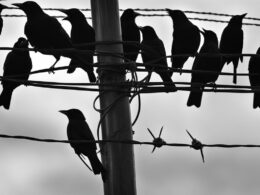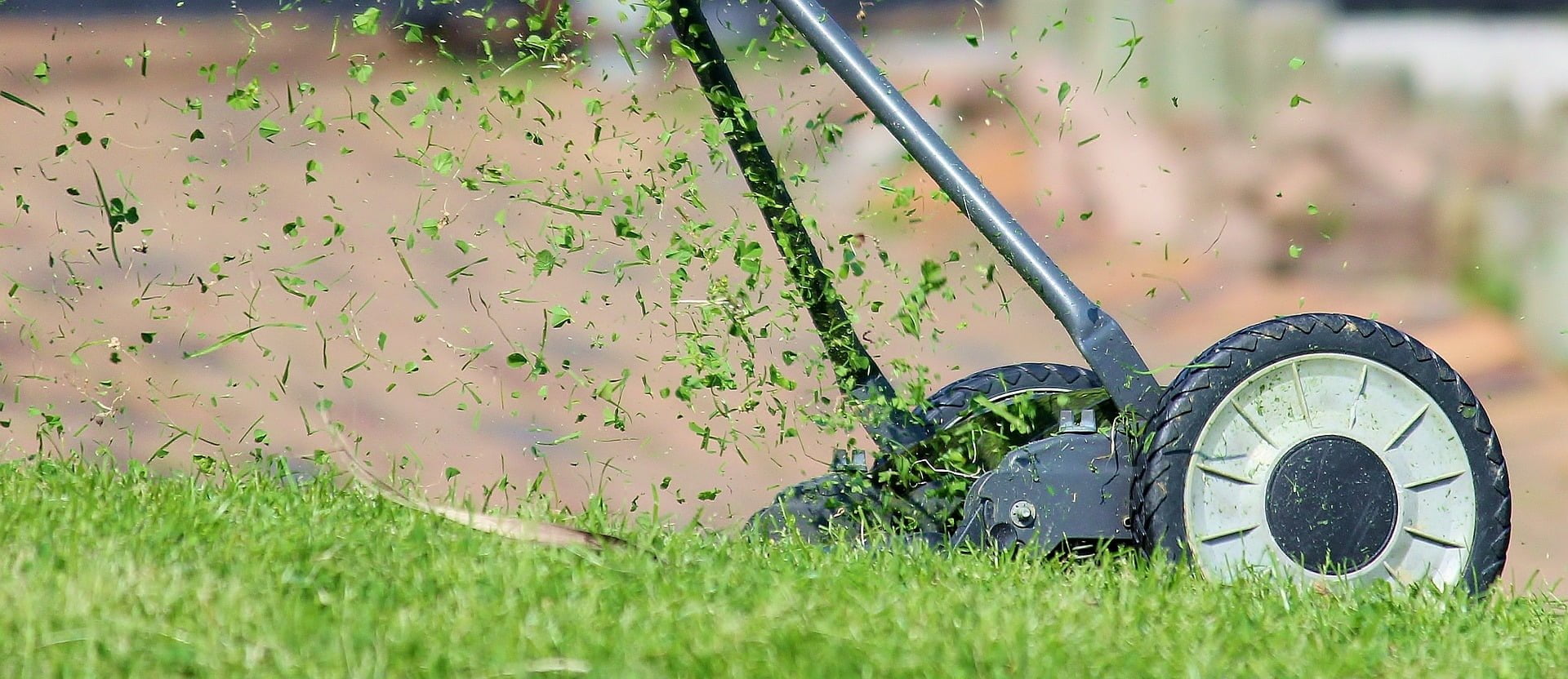Are you dealing with a wasp problem in your home or yard? Wasp infestations can be not only annoying but also potentially dangerous, especially if you or your family members have allergies to their stings. When it comes to getting rid of wasps, it’s important to consider the cost of extermination as well as the effectiveness of the pest control methods.
Professional wasp extermination services offer effective solutions to eliminate these stinging insects from your property. While the cost of wasp removal may vary depending on several factors, it is possible to find affordable pest control options that can provide the desired results.
Based on our research and quotes obtained from various pest control companies, professional wasp extermination costs range between $100 and $1,300, with an average cost of $375. This includes the treatment of nests, removal of wasps, and preventive measures to ensure long-term control.
One reputable pest control company, Terminix, offers a one-time pest treatment package that includes paper wasp extermination for $300. This can be a cost-effective solution for homeowners looking for immediate wasp removal.
It’s important to note that the average costs for wasp extermination can vary depending on the type of treatment required and the type of wasp infestation you’re dealing with. Factors such as the nest location, nest size, and nest accessibility can also affect the overall cost of extermination.
Key Takeaways:
- Professional wasp extermination can cost between $100 and $1,300, with an average cost of $375.
- Terminix offers a one-time pest treatment that includes paper wasp extermination for $300.
- The cost of wasp removal varies based on the type of treatment, type of wasp, nest location, nest size, and nest accessibility.
- Seeking professional pest control services ensures effective and long-lasting results.
- Consider affordable options and compare quotes from different pest control companies before making a decision.
Average Costs for Wasp Extermination
When it comes to wasp extermination, understanding the average costs can help you budget and make informed decisions. The average cost of wasp extermination ranges from $100 to $1,300, depending on various factors such as the type of treatment and the type of wasp infestation you are dealing with.
Here is an overview of the pricing for different treatments:
- Wasp removal: $100 – $500
- Initial pest control visit: $150 – $300
- Monthly treatments: $50 – $150
- Paper wasp removal: $100 – $200
- Mud dauber removal: $100 – $250
- Bald-faced hornet removal: $200 – $500
- Yellow jacket removal: $300 – $1,300
It’s important to note that these prices are estimates and can vary depending on factors such as the size and location of the wasp nest. For example, nests located in difficult-to-reach areas or larger nests may require additional treatment and labor, which can impact the overall cost.
To give you a better idea of the cost breakdown, let’s consider an example: Terminix offers a one-time pest treatment that includes paper wasp extermination for $300. This cost includes the inspection, treatment, and follow-up to ensure the wasps have been effectively eliminated.
Factors Affecting Wasp Removal Cost
When it comes to removing wasp nests, several factors can influence the overall cost. Understanding these factors is crucial for accurate budgeting and finding the right extermination service for your needs.
One of the primary factors that affect wasp removal cost is the size of the infestation. Larger infestations often require more extensive treatments and additional resources, leading to higher costs. On the other hand, smaller infestations may be easier and quicker to eliminate, resulting in lower expenses.
The location of the wasp nest is another important consideration. Common nest locations include ground-level, tree branches, or even within attics. Nests situated in hard-to-reach places, such as attics, may require specialized techniques or equipment, increasing the overall cost of removal.
Nest accessibility also plays a role in the total cost. If the nest is easily accessible, such as on an exterior wall, the removal process may be more straightforward and less time-consuming. However, nests hidden in walls or other inaccessible areas may require more extensive efforts, potentially raising the overall cost.
Additionally, the type of wasp infestation and the treatment method used can impact the cost of extermination. Different types of wasps may require specific treatments or products, which can vary in price. It’s essential to consider these factors when assessing the overall cost of wasp removal.
Considering these factors and consulting with professional exterminators will help you determine the appropriate approach and estimate for wasp removal. In the next section, we will explore the different types of wasps and their nesting locations, providing further insights into the challenges faced during extermination.
Types of Wasps and Nest Locations
When it comes to wasps, different species have unique nest locations that impact the removal process. Understanding these variations can help you better address your wasp problem.
Paper Wasps
One common type of wasp, the paper wasp, typically builds its nests in easily accessible areas. These nests are commonly found hanging from structures such as eaves, branches, or even outdoor furniture. Their open honeycomb-like nests are crafted from a paper-like material, giving them their name. It’s important to exercise caution around paper wasp nests, as they can become aggressive when threatened.
Mud Daubers
Mud daubers are notorious for their unique nesting behavior. As their name suggests, these wasps create nests using mud. They construct tubular mud nests along walls, under eaves, or in crevices. Mud dauber nests are often long, slender, and cylindrical in shape. Unlike other wasp species, mud daubers are typically solitary creatures and are less aggressive.
Bald-faced Hornets
Bald-faced hornets, which are actually a type of wasp, build their nests high up in trees or on buildings. Their nests resemble large, pear-shaped structures and are often hidden among foliage. These aggressive wasps are known for their painful stings and should be dealt with caution. Due to their nest locations and aggressive nature, it’s recommended to seek professional assistance in removing bald-faced hornet nests.
Yellow Jackets
Yellow jackets are another species of wasp that can cause problems for homeowners. Unlike paper wasps and mud daubers, yellow jackets often nest underground. They create nests in abandoned burrows or dig their own in soil, making them difficult to locate and eradicate. These wasps can become aggressive when defending their nests, so care must be taken during removal.
Treatment Methods for Wasp Removal
When it comes to removing wasps, it’s essential to employ effective treatment methods that ensure the complete eradication of these stinging pests. Several techniques have proven to be successful in wasp removal, each with its own advantages and considerations.
-
Aerosol Spray
One popular treatment method for wasp extermination is the use of aerosol sprays or concentrated liquids. These products are designed to be applied directly onto the nest, effectively targeting and eliminating the wasps. The advantage of aerosol sprays is their precision and ease of use, allowing for accurate application without requiring extensive equipment or training. However, the effectiveness of aerosol sprays may vary depending on the size and location of the nest.
-
Dusting
Dusting with powdered pesticides is another commonly used method for wasp removal. This technique involves applying a fine pesticide powder directly onto the nest. As the wasps enter and exit the nest, they come into contact with the powder, which adheres to their bodies and wings. The wasps then carry the toxic powder back into the nest, effectively spreading it to other members of the colony. Dusting is particularly effective for nests located in hard-to-reach areas or enclosed spaces.
-
Vacuuming
In cases where wasps have built their nests in small crevices or confined spaces, vacuuming can be a practical treatment method. By using a specialized vacuum designed for pest control, the wasps can be safely and efficiently removed from their nesting area. This method is especially suitable for nests located indoors or in areas where other treatment methods may not be feasible. However, it’s important to exercise caution and utilize appropriate protective gear when vacuuming wasps to prevent stings and ensure personal safety.
It’s worth noting that the choice of treatment method may vary depending on factors such as the size and location of the nest, as well as the expertise of the exterminator. Consulting with a professional pest control service is recommended to determine the most effective treatment approach for your specific wasp infestation.
To better understand these treatment methods, refer to the visual representation below:
DIY Wasp Removal vs Professional Wasp Extermination
When it comes to dealing with a wasp infestation, you might have the option of attempting DIY removal or hiring a professional exterminator. While DIY methods may seem more cost-effective, it’s important to consider the potential risks and benefits associated with each approach.
DIY wasp removal techniques such as using insecticide sprays or setting up homemade traps can be tempting due to their lower cost. However, it’s crucial to understand the potential hazards involved with DIY methods.
- Risk Factors: DIY wasp removal carries the risk of being stung, which can be particularly dangerous for individuals who are allergic to wasp venom. Additionally, identifying the location of a wasp nest may not be easy and can result in accidental disturbances, provoking aggressive behavior from the wasps.
- Ineffective Results: Without proper training and knowledge, DIY methods may not effectively eliminate the entire nest. This can lead to a recurrence of the infestation, causing more frustration and potential harm in the long run.
- Cost Comparison: While DIY methods may initially seem cheaper, the costs can add up if multiple attempts are required or if protective equipment needs to be purchased. On the other hand, professional wasp extermination services provide a comprehensive solution with a one-time fee, saving you time, effort, and potential additional expenses.
- Professional Expertise: Hiring a professional exterminator ensures that the removal process is carried out by trained technicians. They have the necessary expertise, equipment, and access to specialized insecticides that target wasps effectively and safely. Professionals can also identify and treat any underlying factors that may be attracting wasps to your property.
In conclusion, while DIY wasp removal methods may be tempting from a cost perspective, professional wasp extermination is often the preferable choice. It provides more effective results, minimizes the risk of stings, and saves you the hassle of repeated attempts. When it comes to your safety and the complete elimination of the wasp problem, trusting professionals is the wisest decision.
Choosing a Pest Control Company for Wasp Extermination
When it comes to dealing with a wasp infestation, hiring a professional pest control company is often the wisest choice. However, with so many options available, it can be challenging to determine which company is the right fit for your needs. To ensure you make the best decision, there are several important questions you should ask potential pest control providers:
Licensing and Insurance
One of the first things you should inquire about is the company’s licensing and insurance. It is crucial to work with a licensed pest control company that meets all legal requirements. Ask for proof of their license and ensure it is up-to-date. Additionally, verify that they have liability insurance to protect you and your property in the event of any damages or accidents during the extermination process.
Experience and Expertise
Experience matters when it comes to effectively and safely eliminating wasp nests. Ask the pest control company about the experience and expertise of their technicians. Inquire about their training and qualifications, as well as their familiarity with different types of wasps and nest locations. A knowledgeable and experienced team will be better equipped to handle your specific wasp problem.
Written Estimates and Guarantees
Request a written estimate from the pest control company before proceeding with any services. This will ensure transparency and help you avoid any surprises when it comes to the cost. Additionally, inquire about any guarantees they offer. A reputable company should stand behind their work and provide a guarantee on their services. Ask how long the guarantee lasts and what it covers.
Safe Products and Practices
Your safety and the safety of your family should be a top priority. Ask the pest control company about the products they use and their safety measures. Inquire if they offer environmentally-friendly or organic options if that is a concern for you. Ensure that their treatment methods align with your preferences and requirements.
Remember, choosing the right pest control company is crucial for effectively and safely eliminating wasp nests from your property. Taking the time to ask these important questions will help you make an informed decision and ensure the best possible outcome.
Can Affordable Pest Solutions also Help with Tiny Red Ant Invasions?
Can affordable pest solutions effectively tackle tiny red ant invasions? Finding reliable tiny red ants invasion tips is crucial. These pests can quickly multiply and infest your home, causing nuisance and potential health problems. Opting for affordable pest solutions that specifically target tiny red ants can aid in eradicating the invasion and preventing future infestations.
Conclusion
In summary, the cost of wasp removal can vary depending on factors such as the type of treatment, type of wasp, nest location, and nest accessibility. On average, professional extermination services range from $100 to $1,300, with an average cost of $375. It’s important to note that specific pricing for different services like initial pest control visits, monthly treatments, and the removal of paper wasps, mud daubers, bald-faced hornets, and yellow jackets can also impact the overall cost.
While DIY methods may seem more cost-effective, professional wasp extermination is often the best option for guaranteed results. Professional pest control companies have the necessary expertise, training, and equipment to safely and effectively eliminate wasp nests. Additionally, they can identify nest locations, offer guarantees, and provide a higher level of safety compared to DIY approaches that involve potential risks of wasp stings and the need to purchase protective gear.
When it comes to wasp removal, prioritizing safety and the complete elimination of the problem is crucial. Hiring a professional pest control company ensures that the job is done thoroughly and efficiently, especially for larger or hard-to-reach nests. However, for small and easily accessible nests, DIY methods can be suitable, but caution should be exercised. Remember that professional extermination is essential for long-term prevention and to ensure the safety and comfort of your home or property.











